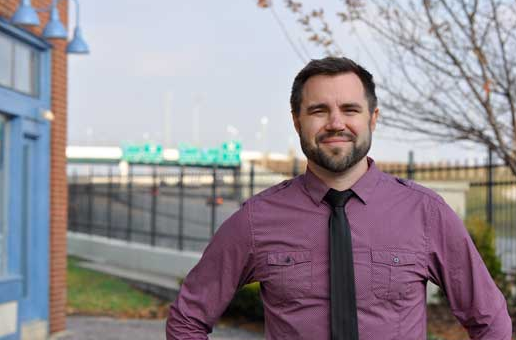Click above to listen in your browser or download the podcast directly (MP3, 29.5 MB, 61 minutes). Subscribe to the show’s podcast feed to get every episode automatically
Chris Hawker invented the PowerSquid, a multi-pronged power adapter that exploded the notion of the old power strip. It’s designed for the modern age of power bricks and oversized adapters. With his Trident Design, Chris and his team have created 70 products over 20 years that it licenses to other companies to manufacture. We’ve talked a lot to first-time industrial designers and producers who’ve taken advantage of funding and production techniques. Chris offers some insight for the long haul.
Show notes
Richard Sapper’s Tizio lamp, invented in 1972, found in the Museum of Modern Art collection, was a self-evident design for which he had great difficulty in finding a manufacturer.
Chris wrote a six-part series about how the PowerSquid came to market at TechCrunch called, delightfully, “The Song of the PowerSquid.” Chris mentioned Alibaba, which is a marketplace for finding suppliers. Aly and Beth Khalifa of Gamil Design talked about making the Teastick, the Impress coffee filter, and other products in Episode #18, “Tea Sticklers and Coffee Impressionists.”
Henry Chesbrough coined the term “open innovation” to describe how companies choose when to use research, inventions, and intellectual property from other sources than internal. Laundry detergent “pods” are concentrated packets of detergent with a water-soluble wrapper. They look a bit like candy, sadly, and the CDC put out a warning about them.
OXO was founded by Sam Farber (who passed away on June 16) after watching his wife, who had mild arthritis, struggle with kitchen tools. Necessity is the mother of invention. Chris and I both like the show How It’s Made, which visually picks apart how manufactured items are produced using robotics, machines, and humans. Eight seasons are available for streaming on Netflix. Drafting used to be a manual, painstaking task. Andrew “Bunnie” Huang is an engineer and designer who lives in Singapore. He’s a guest on an upcoming episode.
An art history professor of mine, Vince Sculley, explained how the Venus of Willendorf would feel in your hand — it was meant to be held that way. Option$, a book by Dan Lyons as “Fake Steve Jobs,” features a fictionalized version of Jobs who has the epiphany of bringing the feeling of ineffability of spirit while in India to material goods.
Trident Design lists all its products on a single page, and it’s a very interesting variety with lots of similarities about the kinds of form and whimsy they employ. The company makes the Onion Goggles, a product that is both functional (for those of us who cry at the volatile chemicals produced by chopping onions), and attempts to be good looking enough that people will wear them. Modern Family featured the goggles (not product placement) in one episode.
The Obama administration has implemented changes and suggested others that will tighten the noose around non-productive patent trolls who enforce intellectual property without being productive in society or the economy.
An example of emotional technology is the Nabaztag, which is no longer made, but has been replaced by the Karotz. These are plastic bunnies with Wi-Fi that can pass certain kinds of messages, including wiggling ears.
